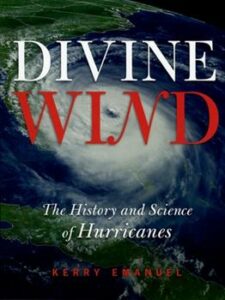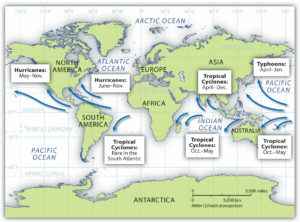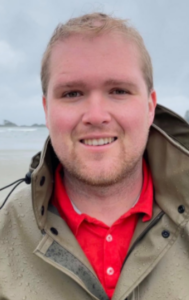Deadly storms shape lives and history. Top storm expert, MIT’S Dr. Kerry Emanuel explains the latest science, and what to expect in coming decades as the world warms. Are you feeling climate anxiety? We talk with social epidemiologist Kiffer Card, from Simon Fraser University in Canada. Who gets climate anxiety and what helps us live through it? Plus more hot news about the ocean.
Listen to or download this Radio Ecoshock show in CD Quality (57 MB) or Lo-Fi (16 MB)
==============================================
KERRY EMMANUEL – BIG STORMS AS WE HEAT THE PLANET
All of us are reeling from a global pandemic. And social instability. But that won’t stop Earth from getting hotter, or storms hitting harder, where we least expect them. With 21 named storms, the 2021 Atlantic hurricane season was the third-most active on record.
Call them hurricanes, typhoons, or the preferred name in science, tropical cyclones. Don’t miss our guest Dr. Kerry Emanuel, author of “Divine Wind: The History and Science of Hurricanes”” and well over 100 peer-reviewed papers on tropical cyclones. Find his web site here.
Dr. Emanuel is Professor of Atmospheric Science at Massachusetts Institute of Technology and Co-Director of the Lorenz Center. He is author of 5 books including his recent “Climate Science and Climate Risk: A Primer” (for the educated non-specialist).

Listen to or download my half hour interview with Kerry Emanuel in CD Quality or Lo-Fi
We discuss two new papers with Emanuel as co-author. The first is “Poleward expansion of tropical cyclone latitudes in warming climates” published in Nature December 29, 2021. Then we explore the second: “Tropical cyclone climatology change greatly exacerbates US extreme rainfall–surge hazard”. That is an open-access paper published in Nature Climate Change February 3, 2022.
I have not counted all the papers Kerry Emanuel led or co-authored since his first in 1977, but it is likely in the hundreds. He began with studies of forecasting short-term phenomenon (like thunderstorms) and added large scale events like hurricanes/cyclones, becoming a world expert on the beginnings, evolution and impacts of great storms. His passion and research led Emanuel to his 2005 book “Divine Wind: The History and Science of Hurricanes”.

As an article in CommonDreams notes: “Global heating caused by human activity could warm oceans enough to fuel hurricanes and tropical storms that strike cities as far north as Boston, a new study published Wednesday projects.”
The paper on poleward expansion of tropical cyclones is the best summary of what we know about these history-making storms. The authors, led by Joshua Studholme, begin by examining the record of tropical cyclones going back millions of years. They include times when carbon dioxide was higher than today, and the world much hotter.
But then the team takes the latest science and climate projections to see what happen as we warm the world in coming decades. The results are mixed. For example, hurricanes reaching into New England on a regular basis is not good news for the East Coast of the United States. But it may mean fewer devastating storms ripping across islands of the Caribbean as the storm track move north.
Based on physics and earth systems, the same motion away from the Equator drives storms further into the Southern Hemisphere than before. Look out Queensland and Northern Australia for even more tropical cyclones. Sydney Australia in the south only got one freak cyclone in 1954, and may not be part of the storm zone this century. Not yet.
Sadly, East Africa may get still more deadly storms like devastating Tropical Cyclone Batsirai that struck Madagascar in the first week of Februrary 2022. It was the second, following Tropical Cyclone Ana less than two weeks ago, which 55 people.
ALL CLIMATE IS LOCAL
Adding to the challenge of understanding our future during climate disruption, changes in storms will also depend on ocean structure and land typology. Changes in the North Atlantic will be different than in the Northwest Pacific (like Japan). As Emanuel says: all climate is local. Their new paper breaks down expected storm changes into regions.
As the paper says:
“Tropical cyclones (TCs, also known as hurricanes and typhoons) generally form at low latitudes with access to the warm waters of the tropical oceans, but far enough off the equator to allow planetary rotation to cause aggregating convection to spin up into coherent vortices. Yet, current prognostic frameworks for TC latitudes make contradictory predictions for climate change.”
According to this new science, storms in the Atlantic will be more influenced by changes in Polar ice, while in the Pacific, ocean warming may draw big storms away from land and into the open ocean.

GET READY FOR THE ONE-TWO PUNCH: HAZARDOUS SURGE PLUS FLOODS
Kerry is co-author, with Avantika Gori leading, of a second paper published this month: “Tropical cyclone climatology change greatly exacerbates US extreme rainfall–surge hazard”. In the interview Kerry explains this beautifully. A combination of changes to these cyclones/hurricanes/typhoons brings up flooding as never experienced in human times. Here is how it works (as I understand it).
1. Due to factors including a weaker Jet Stream, cyclones may move slower across the land – even though interior winds speeds are quite high. Don’t forget, a hurricane with winds over 150 miles per hour (240 km/h) may only travel across the countryside at a few miles per hour. The whirling storm itself has no motive power. It is moved by prevailing winds. As blocking patterns become more common (due to climate change) hurricanes can become stuck. Think of Hurricane Harvey which hit the Texas coast in 2017, went back over sea (picking up more water and energy) and then came back to land again.
I covered how storms are slowing down in the Radio Ecoshock show June 20, 2018 “Carbon Climate Showdown”: Dr. Jim Kossin of NOAA leads climate reports for the U.S. Government and the IPCC. His specialty is big storms. Kossin’s latest paper says tropical cyclones (hurricanes) are slowing down and leaving a greater trail of destruction.
2. But the warmer atmosphere holds more water, so there is more to fall on the land. That is just the physics of warmer air.
3. All that rainfall, which may be over a period of days, saturates the soil, and then rushes back toward the ocean with every stream and river overflowing. At some point, that surge of land discharged water runs into a high storm surge coming in from the sea.
4. The storm surge is higher than ever because the underlying seas are higher – rising seas due to global warming. It may also be driven by higher winds. If the storm surge coincides with high tides, and then collides with over-flowing rivers, mega flooding results. Damages and loss of life can be huge.
5. These are “compound events” and storm scientists are concerned the public and our governments are not aware and preparing for these a-historic disasters.
I hope I got that right. Please listen to the interview with Dr. Emanuel to get it straight from an actual scientist.
A FEW STORM FACTS
According to the U.S. Government agency NOAA: Hurricanes, cyclones and typhoons are all types of tropical storms. Hurricanes are tropical storms that form over the North Atlantic Ocean and Northeast Pacific. Cyclones are formed over the South Pacific and Indian Ocean. Typhoons are formed over the Northwest Pacific Ocean.
“The weakest tropical cyclones are called tropical depressions. If a depression intensifies such that its maximum sustained winds reach 39 miles per hour, the tropical cyclone becomes a tropical storm. Once a tropical cyclone reaches maximum sustained winds of 74 miles per hour or higher, it is then classified as a hurricane, typhoon, or tropical cyclone, depending upon where the storm originates in the world. In the North Atlantic, central North Pacific, and eastern North Pacific, the term hurricane is used. The same type of disturbance in the Northwest Pacific is called a typhoon. Meanwhile, in the South Pacific and Indian Ocean, the generic term tropical cyclone is used, regardless of the strength of the wind associated with the weather system.”
Hurricanes develop over water that is warmer than 80 ºF.
More people are killed by flooding because of the storm surge than by any other hurricane effect.
Emanuel et al find there is no single story of why these big cyclones form. A majority of them can be included in standard climate models, but up to 30% cannot, and that 30% is most likely to be affected by global warming. These have not previously appeared in projections of what our climate will be like, in 2050, or 2100. So Emanuel and his colleagues are offering new tools that can be added to climate models and policy planning.
In a 2016 paper, James Hansen with 18 co-authors shone a spotlight on storms in past ages stronger than anything seen today. Some moved large rocks inland in the Caribbean. Does it point toward super-storms to come as we heat the planet? Get Kerry’s answer in the interview.
========================================
DR. KIFFER CARD – CLIMATE ANXIETY
Do you suffer from climate anxiety? Do mental health problems increase when catastrophe strikes? We get a revealing new study into the mental health impacts of climate change. A test case arose in June 2021 when a massive heat wave stalled over Western North America. In British Columbia Canada, at least 600 people died in the event, and the village of Lytton burned to the ground.
A team of psychologists managed to survey people before and after this terrible heat dome! Here to explain ground-breaking science is co-author Dr. Kiffer Card. He is Assistant Professor with the Faculty of Health Sciences at Simon Fraser University. Dr. Card is a social epidemiologist, and director of the Mental Health and Climate Change Alliance.

Kiffer Card, Simon Fraser University, Social Epidemiologist
Listen to or download my 24 minute interview with Kiffer Card in CD Quality or Lo-Fi
We discussed the new paper “The 2021 Western North America Heat Dome Increased Climate Change Anxiety Among British Columbians: Results from A Natural Experiment”. This is open access (free to anyone).
Check out kiffercard.com and professionals can join the Mental Health and Climate Change Alliance.
When developing their climate change anxiety scale in 2020, researchers Clayton and Karazsia found “behavioral engagement” is not related to climate anxiety or depression. Does that mean learning about climate change does not lead to anxiety in students, or any of us? I’m asking for a friend who does radio shows about climate…
Although not part of this study, in 2021 many people also suffered anxiety due to the pandemic, and the economic impacts of COVID-19. Can anxiety from two concurrent causes compound, and if so, could it be worse – more than the sum of it’s parts? In climate disasters, we count deaths, maybe hospitalizations. Often there is a tally of physical impacts, like the number of homes lost, or insurance costs. Meanwhile millions of people around the world have been traumatized, and yet so little is known about the mental health impacts of climate change.
Some scientists and environmentalists think if climate anxiety becomes widespread, there might be enough support and demand for real action by governments and corporations. But is it possible if the whole herd is nervous, it could go the other way, stimulating a general denial and opposition to action?
We see with the COVID pandemic how a worn-out public can breed anger, which may lead to political change or break-down. But the pandemic will end, or become treatable, while climate disruptions and disasters will increase for generations. Historian Alfred McCoy suggests climate-driven impacts on China will end their ambitions for world power by 2050. It is possible the mental stress of continuing climate pressure and disasters could harm social institutions, or civilization itself.
===================================================
AN UPDATE ON OCEAN HEATING
I want to give you an update on two recent Radio Ecoshock shows. We interviewed top scientist Keven Trenberth about marine heat and marine heat waves that kill off sea life, including coral, the nurseries of the sea. More science arrives raising huge red flags about extreme heat in ocean becoming the new normal.
A new paper, published February 1, 2022 reveals, quote: “The recent normalization of historical marine heat extremes”. That is the title of the paper led by Marine Biologist Kisei R. Tanaka from the Monterey Bay Aquarium in California. Basically they analyzed ocean heat records from 1870 more or less to today. The highest heat events from the period 1870-1919 occurred 2 percent of the time. Since 2014, those extreme heat levels are found in global oceans more than 50% of the time, making historical extreme heat the new normal.
The heat is coming from solar energy trapped by our growing blanket of greenhouse gases in the atmosphere. Burning fossil fuels is the single large source of greenhouse emissions. Up to 90% of our excess heat goes into the sea. The more we burn, the hotter the ocean gets. Marine extinctions could come sooner and more widely than land animals. We won’t see it, until seafood becomes rare, super expensive, fished to death, and then gone. Of course we could save sea life, but that would mean fundamental changes to our civilization and conveniences.
In our February 2nd show I spoke with author and engineer Wake Smith about his book “Pandora’s Toolbox: The Hopes and Hazards of Climate Intervention”. Wake Smith joins a huge chorus saying we must have carbon capture and storage to avoid climate catastrophe. The United Nations is counting on it, in things like the Paris Climate Accord, and the latest predictions of the Intergovernmental Panel on Climate Change.
TINY STEPS IN CARBON CAPTURE
Environmentalists argue carbon capture in storage does not exist at any meaningful level anywhere in the world, despite two decades of talking about it. Scientists like Kevin Anderson call carbon capture and storage a “unicorn” solution for climate change. I would like to see carbon capture and storage implemented on a huge scale, as part of emergency action to head off a climate crisis our civilization cannot survive. That catastrophe is rushing toward us. We need almost every tool we can devise (but not those which damage nature and future generations).
The oil industry doesn’t help. I get a breathless press release about The Genesee CCS Project in Alberta, brought to us by oil, gas and pipeline giant Enbridge. They got a local first nation Resort and Casino group to get on board.
Capital Power and Enbridge Collaborate to Reduce CO2 Emissions in Alberta
But what is the project? A big natural gas burning plant. Carbon Capture and Storage, they hope, is, quote: “positioning them to deliver reliable and affordable electricity for generations to come.” So there you have it. They plan to keep fracking and burning gas for generations to come, which is long after the year 2100. And they are spending millions of dollars to invest in new fossil fuel infrastructure, and calling it green.
Never mind the massive amounts of methane into the atmosphere from gas fracking. The industry just vents that out or flares it all over the world. Never mind more clouds of methane rising from leaking pipeline systems in every gas producing country. This new carbon capture facility is “to capture up to 3 million tonnes of CO2 annually”. Is that less than the methane coming from Alberta cattle? Enbridge is pretty fuzzy on how this carbon will be stored “for generations to come”. But as Green venture investor (and Radio Ecoshock listener) Dan Miller points out, this is a working capture facility and could lead to more efforts. Despite reports from NGO’s, it is working. But if the plan is to keep pumping out more dangerous fossil fuels for generations, my reaction is:
Stick a green emblem on the grill of your diesel truck. That is what we have so far.
======================================
Radio Ecoshock is like a box of chocolates. You never know what you are going to get. Be sure and tune in next week, for the continuing saga of a semi-intelligent species found only on a rare rock in space.
I’m Alex Smith. Please support my work getting this important news out free to non-profit radio stations around the world. Make a one-time or regular donation here.
Thank you for listening, and caring about this living world!